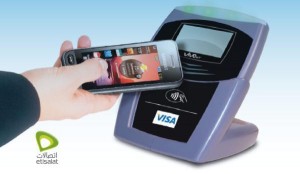UAE is one of the strongest m-commerce markets in the world, according to the PayPal Mobile Research 2014/2015. Only China has recorded higher mobile shopping rates over the past one year.
The report places the UAE second on the list of top countries for smartphone shopping with m-commerce rates of 57%. China heads the ranking with 68%. Apart from China and UAE, only Turkey has recorded m-commerce popularity of over 50%.
Researchers predict that global mobile commerce will continue to grow. It is expected that by 2016, the compound annual growth rate will reach 42%. The growth in the United Arab Emirates is estimated at a little under 40%. In addition to that, young consumers aged between 18 and 34 years, now shop more via their smartphone than via a desktop or a laptop computer. According to the study, 32% of young mobile shoppers in the UAE prefer mobile shopping, whereas 30% still stick to online shopping.
Nevertheless, most of the mobile shopping made by UAE consumers continues to be offline. The main m-commerce activities in the UAE include searching for product information (41%), using smartphones to locate or find information about a store or a business (35%), reading customer or user reviews (32%), as well as comparing prices (33%). All of these activities are classified as offline mobile shopping. In comparison, just 24% of UAE smartphone users have actually purchased from their smartphones while at home or at work. Another 17% have used an application to make a purchase or pay in a store, while 14% have paid for digital goods.
 Top countries for smartphone shopping:
Top countries for smartphone shopping:
- China (68%)
- UAE (57%)
- Turkey (53%)
- Mexico (37%)
- Israel (37%)
- Italy (36%)
- Spain (34%)
- Russia (34%)
- UK (33%)
- Australia (33%)
Similar findings were made by another recent report by On Device Research. According to it, 90% of UAE consumers have tried offline mobile shopping at least once. That is about 30% more compared to the rest of the region.
These figures are not unexpected. UAE has the highest mobile subscription penetration in MENA. According to a study by GSMA, subscription rate in the country has already reached 83%. In contrast, the rate in South Sudan, the country with lowest mobile penetration in the region of the Middle East and North Africa, is barely 16%.
Moreover, mobile subscription in the entire region continue to increase. Ericsson’s most recent Mobility Report has estimated that during the third quarter of 2014, mobile subscriptions in the Middle East alone have hit 6 million, which is 1 million more compared to mobile subscription rates in North America measured during the same period.




































